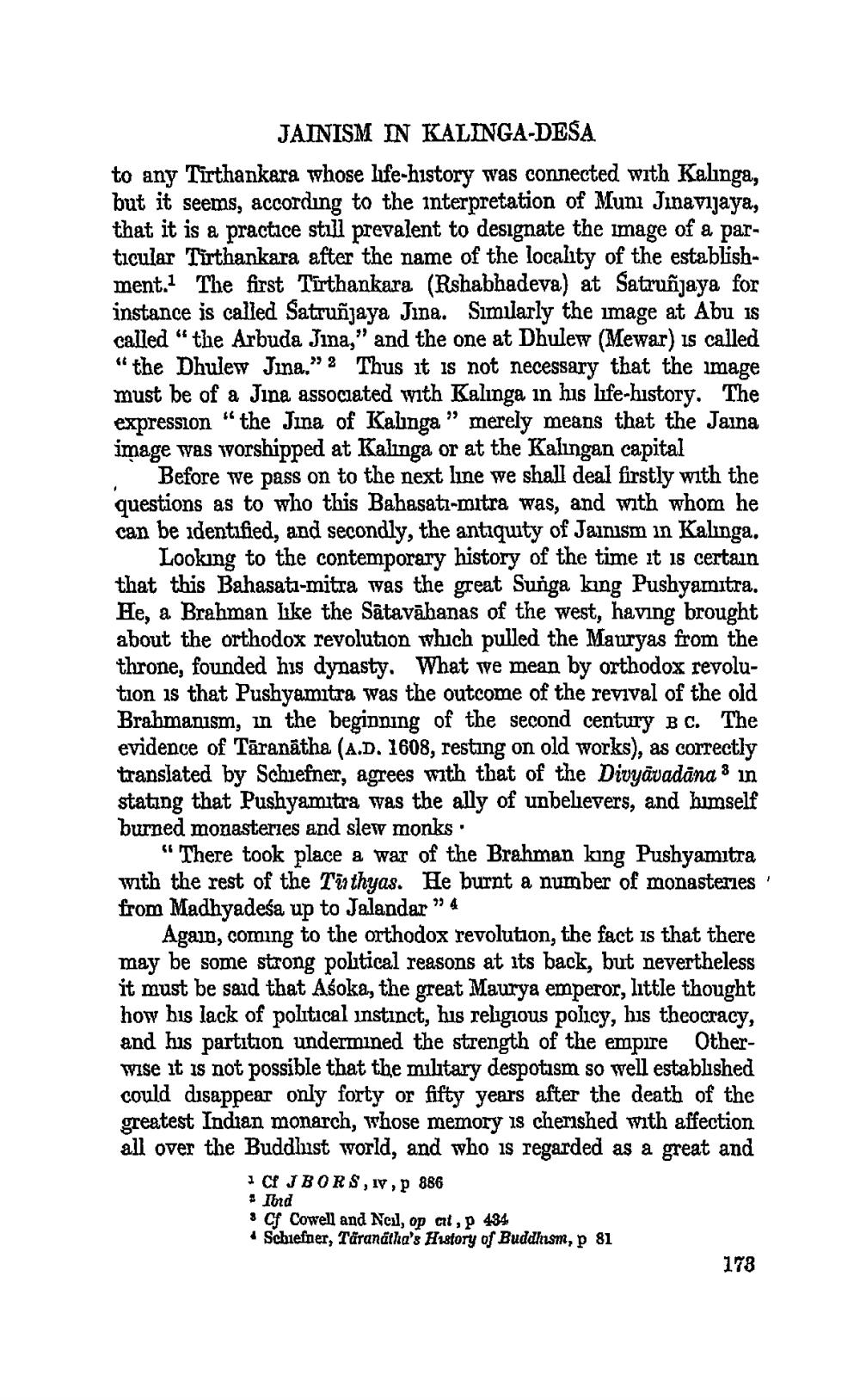________________ JAINISM IN KALINGA-DESA to any Tirthankara whose lufe-history was connected with Kalinga, but it seems, according to the interpretation of Muni Jinavijaya, that it is a practice still prevalent to designate the image of a particular Tirthankara after the name of the locality of the establishment. The first Tirthankara (Rshabhadeva) at Satrunjaya for instance is called Satrunaya Jina. Similarly the image at Abu is called "the Arbuda Jina," and the one at Dhulew (Mewar) is called "the Dhulew Jina."2 Thus it is not necessary that the image must be of a Jina associated with Kalinga in his life-history. The expression " the Jina of Kalinga" merely means that the Jaina image was worshipped at Kalinga or at the Kalingan capital Before we pass on to the next line we shall deal firstly with the questions as to who this Bahasati-mitra was, and with whom he can be identified, and secondly, the antiquity of Jainism in Kalinga. Looking to the contemporary history of the time it is certain that this Bahasati-mitra was the great Sunga king Pushyamitra. Fe, a Brahman like the Satavahanas of the west, having brought about the orthodox revolution which pulled the Mauryas from the throne, founded his dynasty. What we mean by orthodox revolution is that Pushyamitra was the outcome of the revival of the old Brahmanism, in the beginning of the second century BC. The evidence of Toranatha (A.D. 1608, resting on old works), as correctly translated by Schiefner, agrees with that of the Divyavadana in stating that Pushyamitra was the ally of unbelievers, and himself burned monasteries and slew monks "There took place a war of the Brahman king Pushyamitra with the rest of the Tasthyas. He burnt a number of monasteries from Madhyadesa up to Jalandar " 4 Again, coming to the orthodox revolution, the fact is that there may be some strong political reasons at its back, but nevertheless it must be said that Asoka, the great Maurya emperor, little thought how his lack of political instinct, his religious policy, his theocracy, and his partition undermined the strength of the empire OtherWise it is not possible that the military despotism so well established could disappear only forty or fifty years after the death of the greatest Indian monarch, whose memory is cherished with affection all over the Buddhist world, and who is regarded as a great and - AJBORS,1,886 # Iord : Cf Cowell and Nesl, op cit, 434 * Schiefper, Taranatha'History of Buddhisma, p 81 178




